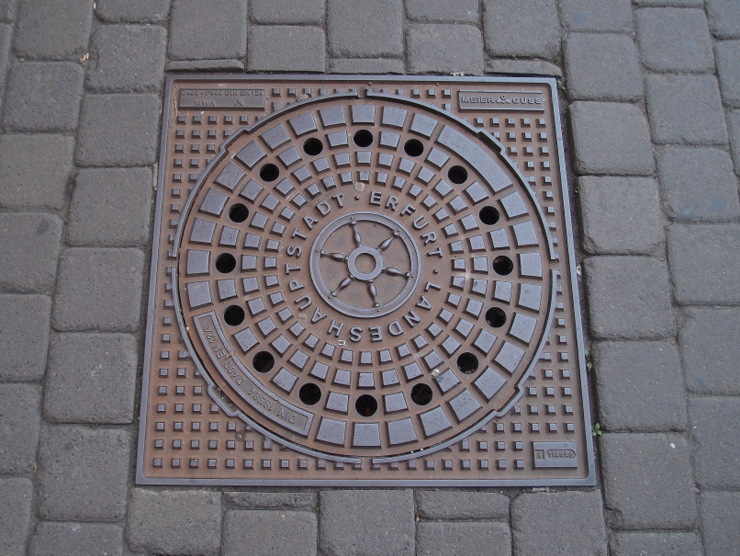
The manhole covers in Erfurt show the local city arms. The wheel in this coat of arms originates from the Wheel of Mainz (Mainzer Rad). In this way, the symbol refers to the period when Erfurt formed a part of the Electorate of Mainz. [German]
You only see what you know (Goethe)

The manhole covers in Erfurt show the local city arms. The wheel in this coat of arms originates from the Wheel of Mainz (Mainzer Rad). In this way, the symbol refers to the period when Erfurt formed a part of the Electorate of Mainz. [German]

Sometimes, you go to the swimming bath to see a local landmark. So it is in Millstatt, a city in the Austrian state of Carinthia. This listed diving tower saw its construction in 1930 according to the plans of Christof Benedikt.

On my urban walk through Naumburg (Saale), a monument with two sculptures attracted me. A young girl stood in front of an old man with a huge moustache. The man obviously represented Friedrich Nietzsche. [German]

On a sunny summer day, I took this exceptional funicular to the hydroelectric plant at the Wasserfallboden. It is generally known as Lärchwand Lift. The inclined lift with an 8.2-metre track width transports large groups of people up the powerful sights.
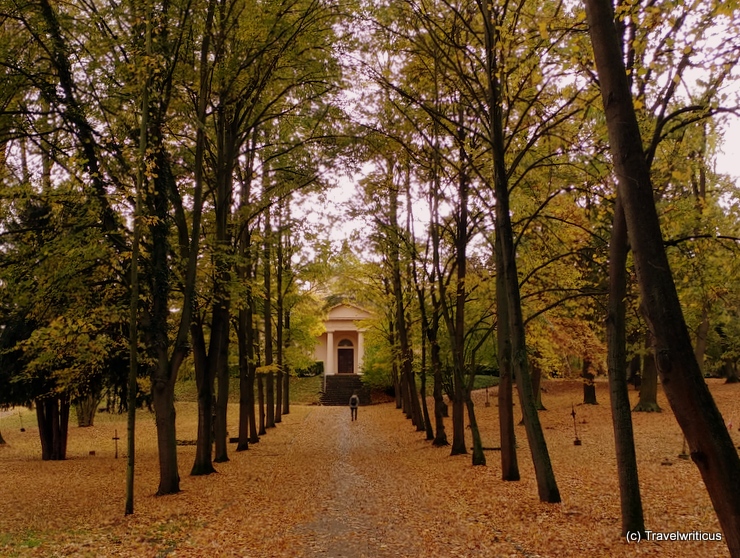
The Historic Cemetery (Historische Friedhof) is part of the World Heritage Site titled Classical Weimar. Johann Wolfgang von Goethe rests here in the Ducal Vault (Fürstengruft). [German]

This monument to Wilhelm von Tegetthoff stands next to the Praterstern railway station in Vienna. Wilhelm von Tegetthoff was an Austrian admiral who became famous for the Victory of Lissa (1866). [German]
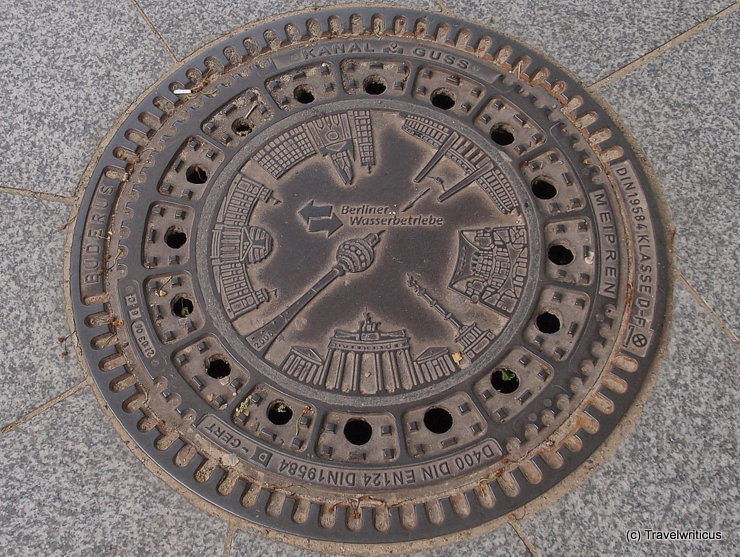
This manhole cover in Berlin displays a compilation of the main sights in the German capital. I’m surprised that the new Federal Chancellery Building (2001) is a member of this group of Berlin attractions. [German]
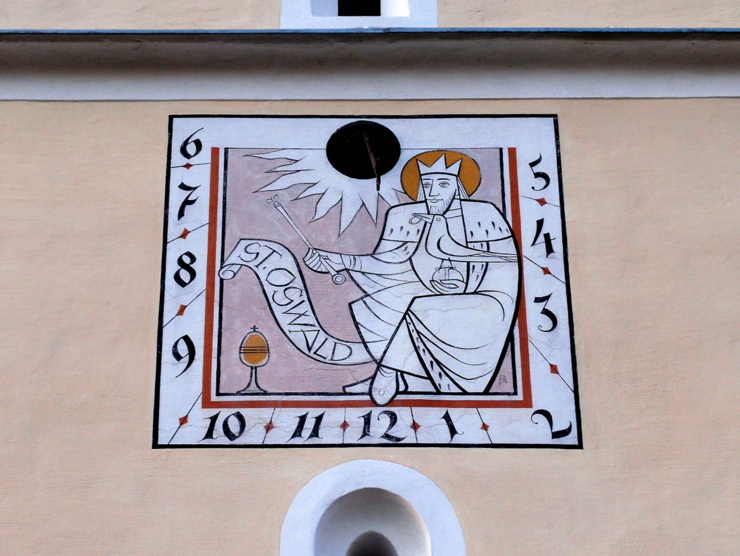
This sundial at the parish church of Puch bei Weiz shows Saint Oswald with a raven in his hand. The church is consecrated to this saint, who ruled as a King of Northumbria in the years 634-642.
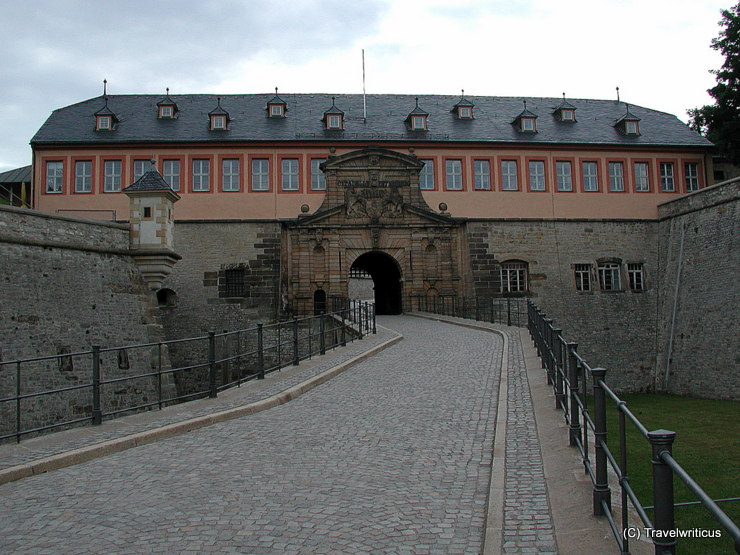
The Zitadelle Petersberg (Petersberg Citadel) is a well-preserved city fortress in the centre of Erfurt. The buildings in the Baroque style were hardly destroyed in wars and escaped demolition during city modernization in the 19th century. [German]

The castle in Wels is generally known as the Castle (Die Burg) or the Wels Castle (Die Welser Burg). It was first mentioned in 776. At that time, the site was just a wooden building with palisades. The construction in stone took place in the 12th or 13th century. [German]
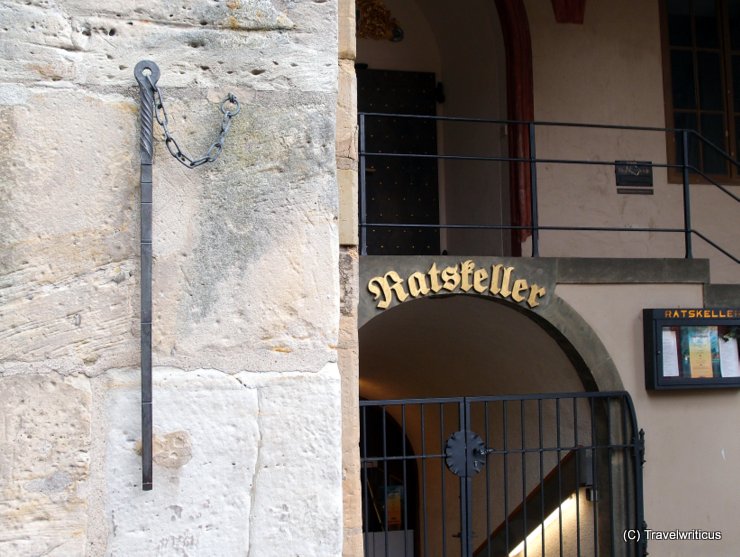
On a wall of the Hildesheim Town Hall, you find this Elle (ell). In the past, merchants on the local market square used to measure their fabrics in ells. The publicly displayed piece formed a benchmark for the correct length of the marketer’s ells.

The Lössl-Uhr (Lössl Clock) is a technical gem in Bad Aussee. The public clock designed by Friedrich von Lössl used to work with the power of changes in atmospheric pressure and temperature.